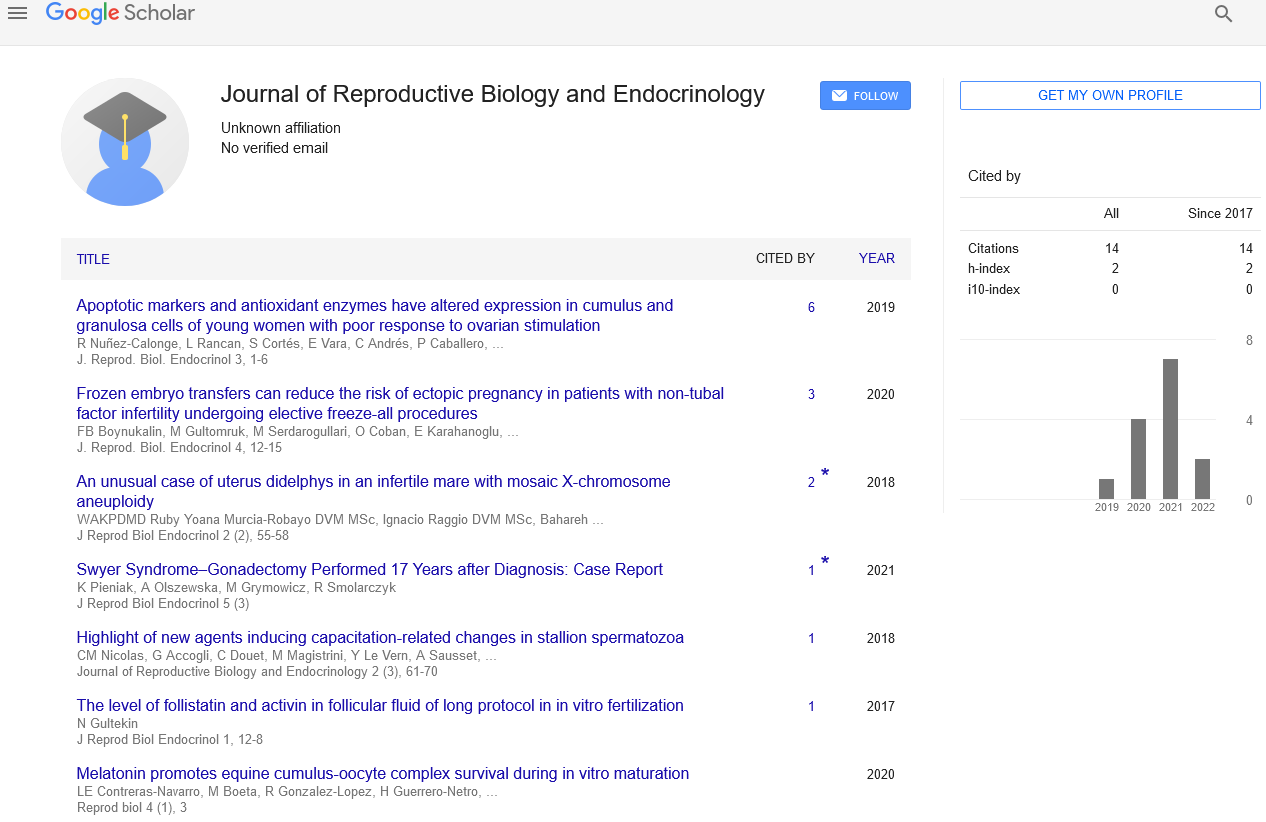
Sign up for email alert when new content gets added: Sign up
Abstract
Clinical characteristics of hypergonadotropic amenorrheic young women
Author(s): Peter Lucas*The differential diagnosis of amenorrhea can be trimmed down with a comprehensive history and physical examination, physical examination, and laboratory tests. The examination of patients with primary amenorrhea should be guided by the presence or lack of sexual development. Primary amenorrhea is frequently brought on by a constitutional delay in growth and puberty in patients with no sexual maturation. The most frequent cause of congenital outflow tract obstruction in patients with normal pubertal development and a uterus is a transverse vaginal septum or imperforate hymen. Mullerian agenesis is the most likely reason for the patient's aberrant uterine development, and a karyotype investigation should show that the patient. Pregnancy should be checked out in patients who have secondary amenorrhea. Based on the causative factor, both primary and secondary amenorrhea is treated. Review of secondary amenorrhea in athletes is done in terms of incidence, management, identifying traits, hypothesised mechanisms, and endocrine profile. Although no explanation has been shown, athletic amenorrhea is categorised under the general heading of persistent anovulation syndrome. Due to heterogeneity in the populations studied and the lack of a common definition for secondary amenorrhea, the recorded occurrences (1%-44%) fluctuate widely. The present course of treatment is briefly described. A number of hypothesised mechanisms including body composition, exercise routine, reproductive maturity, sport specialisation, food, and psychological stress have been prompted by a number ofdescriptors of amenorrheic sportsmen.
Full-Text | PDF




